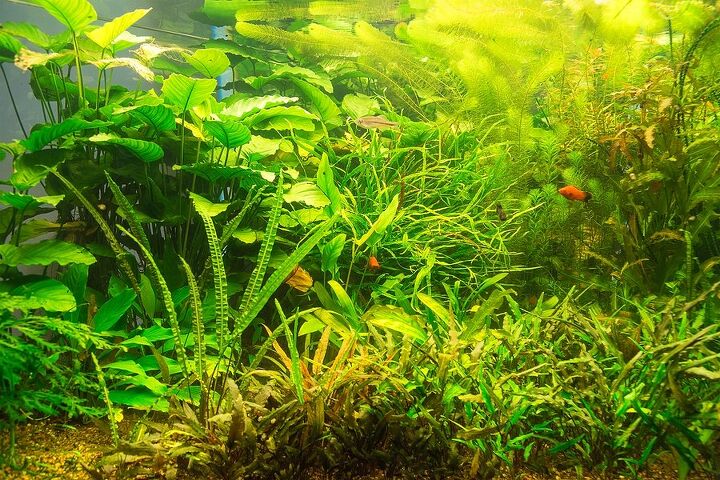What You Need to Know About C02 for Planted Tanks

Like all living things, aquarium plants require certain nutrients and conditions in order to thrive. In addition to water, light, and certain macronutrients, aquatic plants also require carbon dioxide (C02). Carbon dioxide is already present in your tank as a byproduct of respiration from your fish, but if you really want your planted tank to thrive, you might need to add some extra C02.
When Do You Need Carbon Dioxide?
Not all aquariums will need supplemental carbon dioxide – it depends on a variety of factors. For example, if you have low to moderate lighting in your tank and that seems to be enough for your plants, supplemental carbon dioxide may not be necessary. If you have very high lighting in your tank, however, it could result in excess algae growth unless you add CO2. But how do you know what qualifies as “low to moderate lighting”? Low lighting is about 1 ½ watts per gallon and it is the absolute minimum in regards to lighting for a planted tank. Moderate lighting is about 2 watts per gallon and high lighting is 3 watts per gallon or more. If you have 3 watts per gallon of lighting, your tank probably also requires supplemental carbon dioxide.
Related: Top 5 Freshwater Fish Species for Planted Tanks
Effects of Supplemental Carbon Dioxide
When you add extra CO2 to your tank, you will notice that your plants start to become more robust. Plants that have started to grow more slowly will return to their normal growth rate and spindly plants will grow thicker. Of course, the effects of extra carbon dioxide will vary depending on the type of plants you have in your tank – supplemental CO2 will benefit some plants more than others. The filtration system you have in place will also affect your CO2 levels – higher water flow means more aeration which means more gas exchange at the surface of the water. If you reduce the flow of your filter you can cut back a little on CO2 loss.
How to Add CO2 to Your Tank
If you think that supplemental CO2 will benefit your tank, there are several different routes you can go. One option is to purchase a ceramic or glass diffuser. A diffuser consists of a porous ceramic disc which is inserted into a glass fixture and hooked up to a CO2 line. When you open up the CO2 line, the pressure in the device builds and tiny bubbles of CO2 are pushed through the ceramic disc to dissolve in the water on their way up to the surface. Another option is an inline CO2 reactor which can be attached to the return line on your canister filter and hooked up to your CO2 line. You can purchase one of these items or make your own.
Related: Top 5 Fast-Growing Aquarium Plants for Planted Tanks
Once you’ve settled on a method for CO2 injection you then need to monitor how much CO2 you are adding to the tank. In order to calculate your CO2 levels you’ll also need to know the carbonate hardness (KH) of your tank water as well as the PH. You can test these values using a simple aquarium water test kit and then compare the results to a table you can find online. The best CO2 level to have in a planted tank is between 15 and 30ppm but, because there is a high margin for error in measurements, you should aim for 20 to 25ppm. Levels above 30ppm will result in stress for your fish and they could die if the CO2 levels climb to 50ppm or higher.
If you are serious about cultivating a thriving, lushly planted aquarium then you need to learn the basics about what aquatic plants need to grow. You then need to do your best to create the ideal environment for plant growth in your tank – one aspect of that is carbon dioxide levels.

Kate Barrington is the loving owner of two cats (Bagel and Munchkin) and a noisy herd of guinea pigs. Having grown up with golden retrievers, Kate has a great deal of experience with dogs but labels herself a lover of all pets. Having received a Bachelor's degree in English, Kate has combined her love for pets and her passion for writing to create her own freelance writing business, specializing in the pet niche.
More by Kate Barrington























